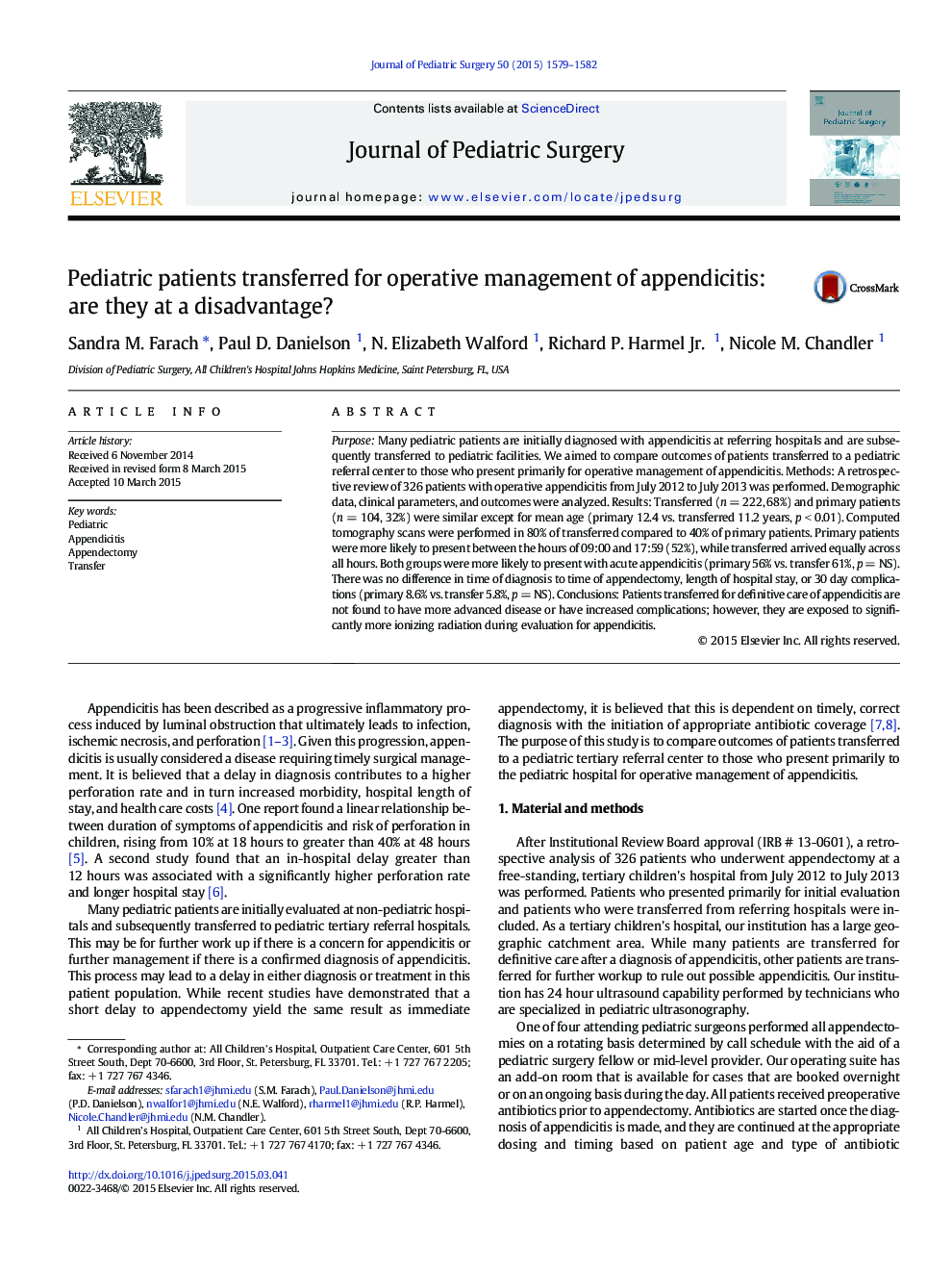| Article ID | Journal | Published Year | Pages | File Type |
|---|---|---|---|---|
| 4155272 | Journal of Pediatric Surgery | 2015 | 4 Pages |
PurposeMany pediatric patients are initially diagnosed with appendicitis at referring hospitals and are subsequently transferred to pediatric facilities. We aimed to compare outcomes of patients transferred to a pediatric referral center to those who present primarily for operative management of appendicitis. Methods: A retrospective review of 326 patients with operative appendicitis from July 2012 to July 2013 was performed. Demographic data, clinical parameters, and outcomes were analyzed. Results: Transferred (n = 222, 68%) and primary patients (n = 104, 32%) were similar except for mean age (primary 12.4 vs. transferred 11.2 years, p < 0.01). Computed tomography scans were performed in 80% of transferred compared to 40% of primary patients. Primary patients were more likely to present between the hours of 09:00 and 17:59 (52%), while transferred arrived equally across all hours. Both groups were more likely to present with acute appendicitis (primary 56% vs. transfer 61%, p = NS). There was no difference in time of diagnosis to time of appendectomy, length of hospital stay, or 30 day complications (primary 8.6% vs. transfer 5.8%, p = NS). Conclusions: Patients transferred for definitive care of appendicitis are not found to have more advanced disease or have increased complications; however, they are exposed to significantly more ionizing radiation during evaluation for appendicitis.
